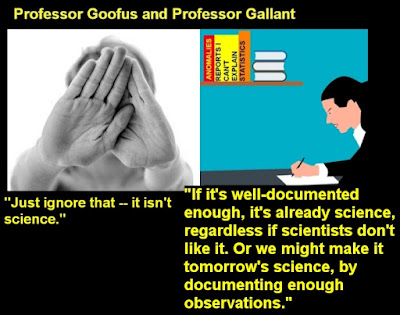"The past three decades have shown that psychiatry’s medical vision is neither scientifically credible nor morally sound." -- Justin Garson, professor of philosophy at Hunter College (link)
The Mad in America site (www.madinamerica.com) is a good site for getting contrarian opinion and analysis on the topic of psychiatric treatment. On the day I am writing this post I will schedule for later publication, there is an interesting article on the site, one entitled "The Iatrogenic Gaze: How We Forgot That Psychiatry Could Be Harmful." The article by Alex Conway is a troubling portrait of psychiatrists who fail to do their job properly because they are doing too much avoiding, downplaying and ignoring reports of anomalies. The anomalies are side effects reported by people using the medicines prescribed by the psychiatrists, reports of side effects that are not on official lists of possible side effects of a drug.
Normally when a drug is approved by a regulatory group such as the FDA, there is published an official list of common side effects, along with a list of rare side effects. But what happens when someone prescribed that drug reports a side effect not on such a list? The authority receiving such a report may treat such a report as an anomaly to be shunned, ignored or explained away. In the article we read this chilling report of someone subjected to the most harmful gaslighting after she reported a side effect of a medicine:
" The doctor diagnosed her with a delusional disorder. Her medical records state: 'Firm fixed delusional belief about medications causing side effects… Impression: delusional disorder with significant health anxiety and OCD with comorbid depressive symptoms.' Rosie was then committed against her will to a psychiatric facility and forced to take medication for her 'delusions'. Four years later, Rosie still suffers the same symptoms."
We read this:
"Drug Injuries are a piece of a wider problem known as iatrogenesis (doctor-made illness). Although drug injuries are virtually absent from public discourse, available research considers them a leading health risk. A 2018 paper examined FDA data on adverse drug events (ADEs) and found a rate of over 100,000 serious injuries per year. That rate has been increasing rapidly: 'From 2006 to 2014, the number of serious ADEs reported to the FDA increased 2-fold… A previously published study… found that from 1998 to 2005, there was a 2.6-fold increase in the reports of serious ADEs and a 2.7-fold increase in the reports of fatal ADEs'. It seems that the rate of serious drug injury is doubling per decade."
The article is very long-winded, and it is hard to quote a few choice lines or a paragraph to give its main idea. I can try to summarize it like this:
(1) Psychiatrists are taught a kind of dogma about effects of the drugs they prescribe, including the idea that they only have a certain number of things called "side effects."
(2) Patients often report what they believe are bad effects from taking such drugs, describing negative effects that are not on such a list of "side effects."
(3) Psychiatrists receiving such reports go into "explain it away" mode, which may consist of various techniques such as assuring the patient he is mistaken, or in the worst case, recording the patient as having a delusion or some type of mental disorder because he made a report contrary to the dogma the psychiatrist was taught.
After reading the article, I thought to myself: "That rather rings a bell." The kind of dogmatism, gaslighting and anomaly aversion reported reminded me of what goes on when mainstream scientists receive reports of the paranormal, such as reports of apparitions, near-death experiences, telepathy, clairvoyance, and so forth.
I can describe a type of anomaly aversion that occurs with neuroscientists and other types of scientists:
(1) Scientists are taught a kind of dogma about what mental powers or mental experiences are possible, dogma that is based on the idea that all mental experiences come from the brain and the senses.
(2) Humans often report experiences conflicting with such dogma, describing events such as apparition sightings, near-death experiences, out-of-body experiences, ESP, clairvoyance, and other phenomena that cannot be explained by brain explanations.
(3) Scientists receiving such reports go into "explain it away" mode, which may consist of various techniques such as telling the person making the report that he is mistaken, or in worse cases, trying to insinuate that the witness was hallucinating or lying.
Below is a comparison of similar behavior in two types of professionals:
- They refuse to include in their textbooks and papers a discussion of important observations of the anomalous and inexplicable.
- They refuse to include in their class lessons a discussion of important observations of the anomalous and inexplicable.
- When acting as peer reviewers and editors, they act to suppress the publication of other scholars fairly reporting on observations of the paranormal.
- In the rare times they discuss the paranormal, they typically make inaccurate generalizations about the quality of evidence for some paranormal phenomena.
- They refuse to approve funding for the further investigation of types of paranormal phenomena that have been well-established as highly worthy of further investigation.
- In the rare times they discuss particular reports of the paranormal, mainstream scientists use gaslighting and unfair characterization to undermine witnesses of the paranormal, and use selective reporting and distortion to make very compelling evidence sound like it is weak evidence.






No comments:
Post a Comment